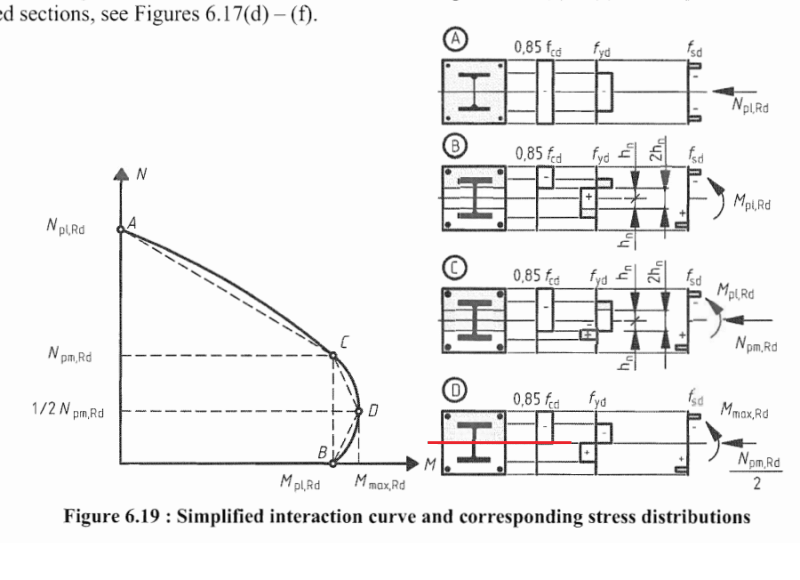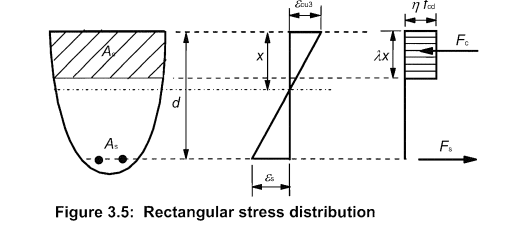Hello!
Here is a picture from Eurocode 4 of stress distributions in concrete and steel assumed for design of composite structures subjected to bending and axial force:

The picture illustrates the stress distributions based on neutral axis in a composite member, used to compute the simplified interaction diagram.
Normally, in concrete structures, we assume the so called "Whitney stress block", where around 0.8 percent of concrete area above the neutral axis is assumed to be in constant stress. This is simplification of the actual stress distribution which extends all the way from neutral axis to the most stressed fiber of the member. Picture from Eurocode 2 demonstrating the idea:

My question is: if we look at the stress distribution for composite member, the distribution is also constant stress, but it extends directly from the neutral axis to the edge of the concrete area. In this case, we don't seem to use the Whitney stress block here. Here however, the use a factor of 0.85 for the stress. Why is it that different stress distributions are assumed when concrete is part of a composite member, and when it is part of a regular reinforced concrete member? Why don't we use the stress block in composite members also?
Thank you!
Here is a picture from Eurocode 4 of stress distributions in concrete and steel assumed for design of composite structures subjected to bending and axial force:

The picture illustrates the stress distributions based on neutral axis in a composite member, used to compute the simplified interaction diagram.
Normally, in concrete structures, we assume the so called "Whitney stress block", where around 0.8 percent of concrete area above the neutral axis is assumed to be in constant stress. This is simplification of the actual stress distribution which extends all the way from neutral axis to the most stressed fiber of the member. Picture from Eurocode 2 demonstrating the idea:

My question is: if we look at the stress distribution for composite member, the distribution is also constant stress, but it extends directly from the neutral axis to the edge of the concrete area. In this case, we don't seem to use the Whitney stress block here. Here however, the use a factor of 0.85 for the stress. Why is it that different stress distributions are assumed when concrete is part of a composite member, and when it is part of a regular reinforced concrete member? Why don't we use the stress block in composite members also?
Thank you!
